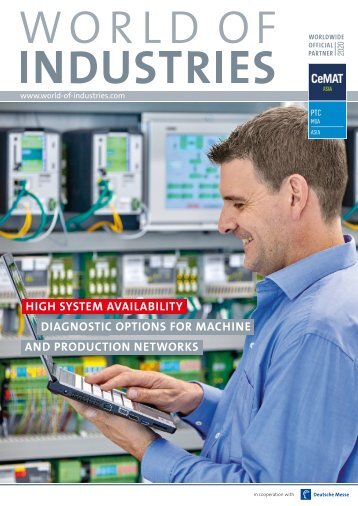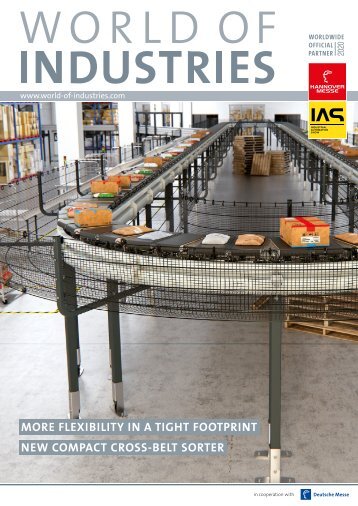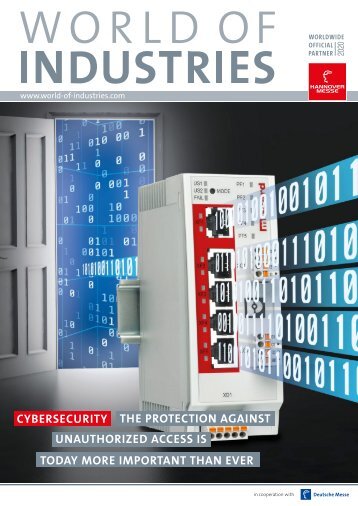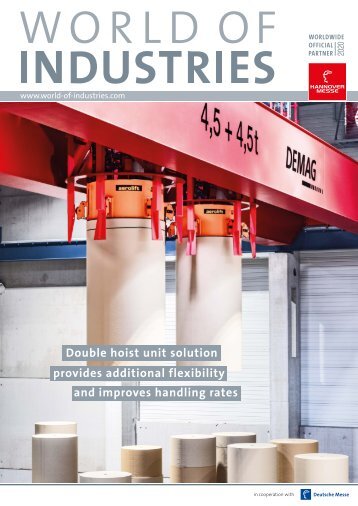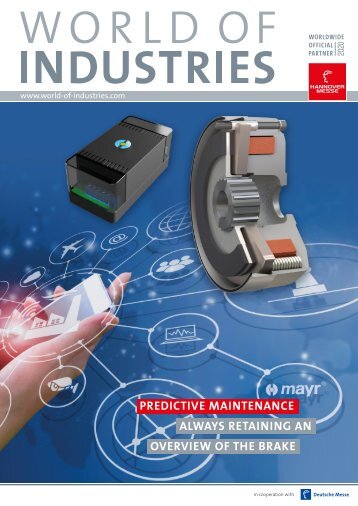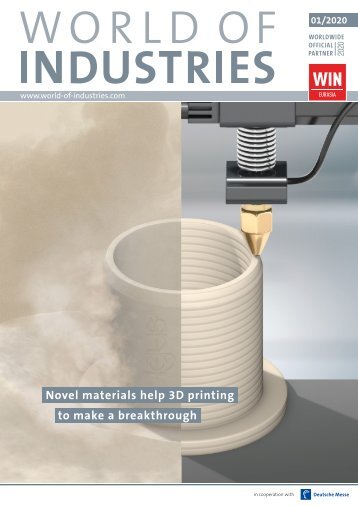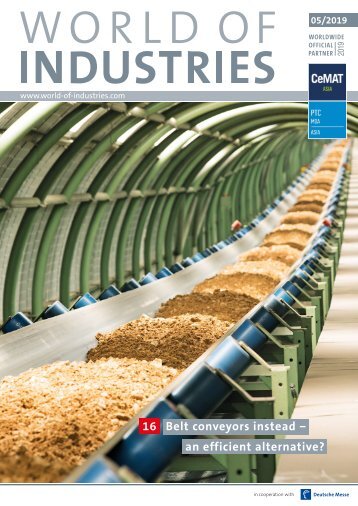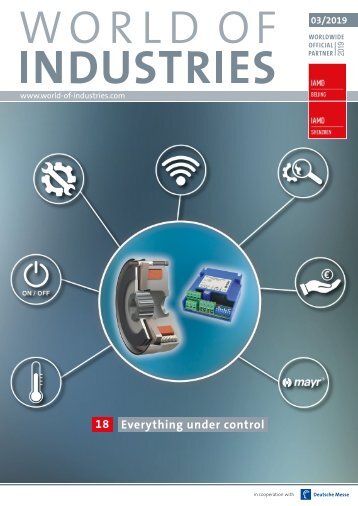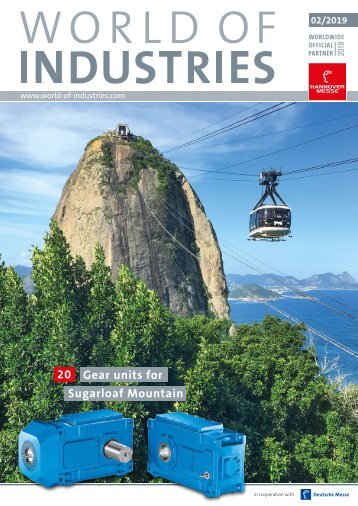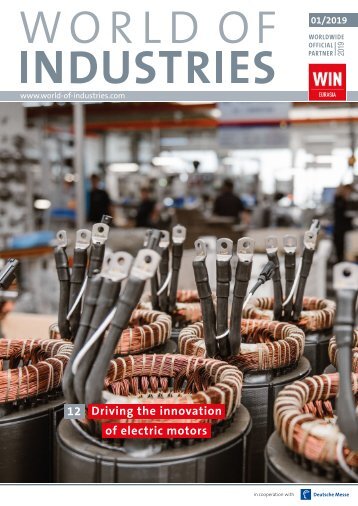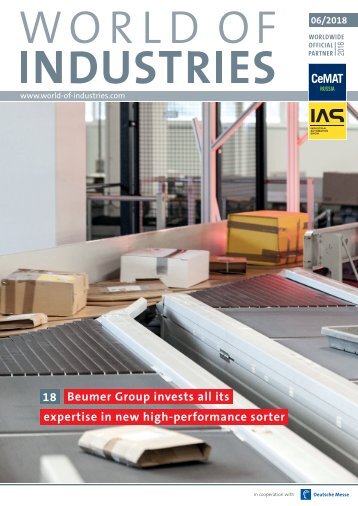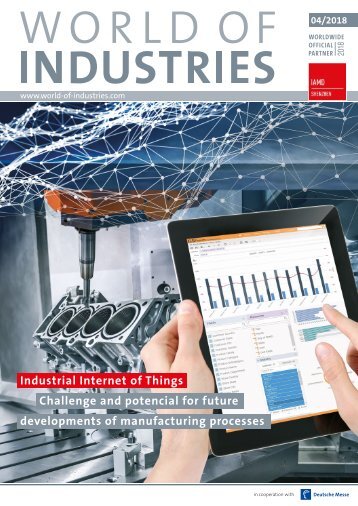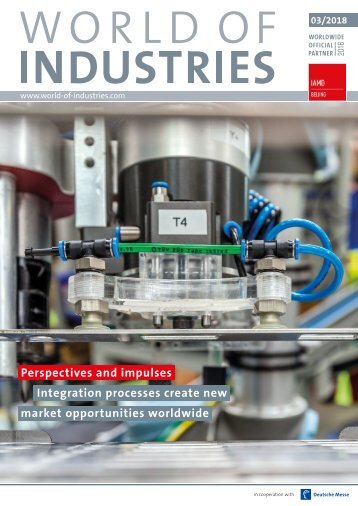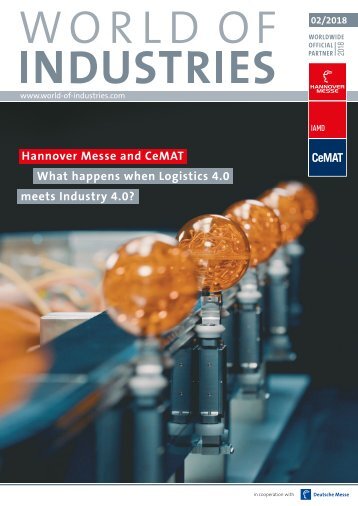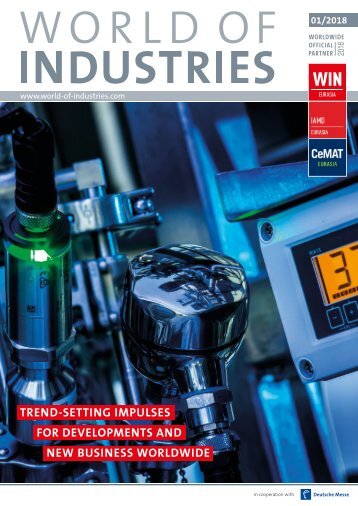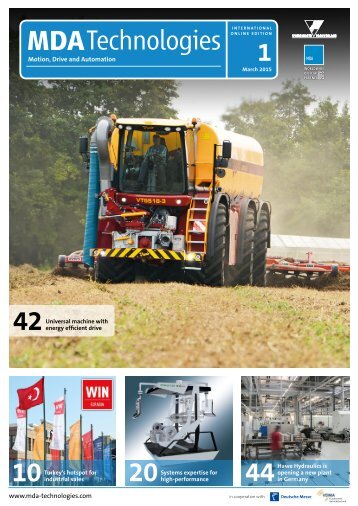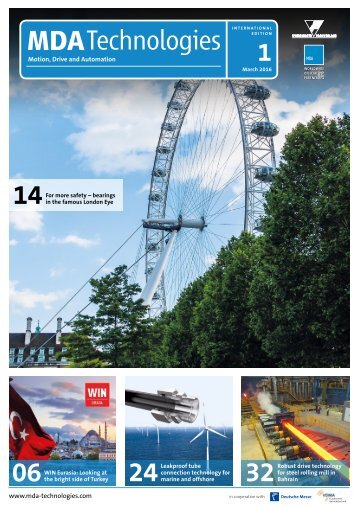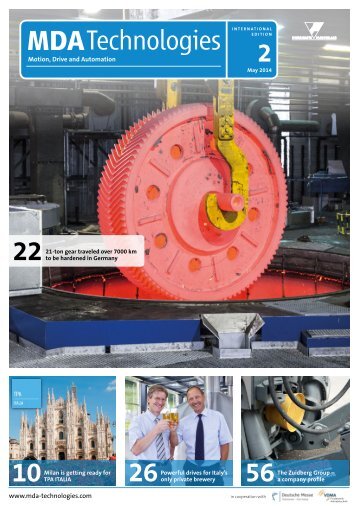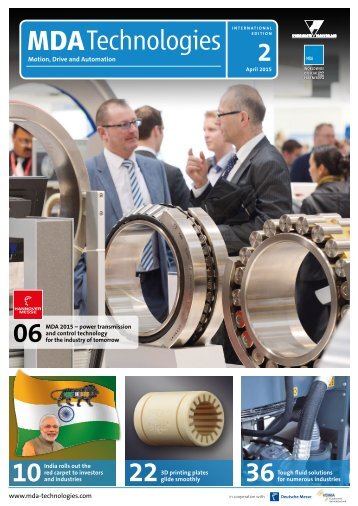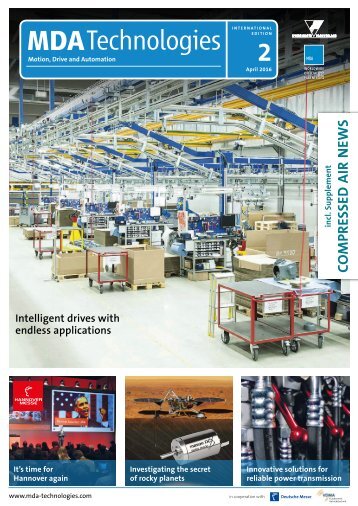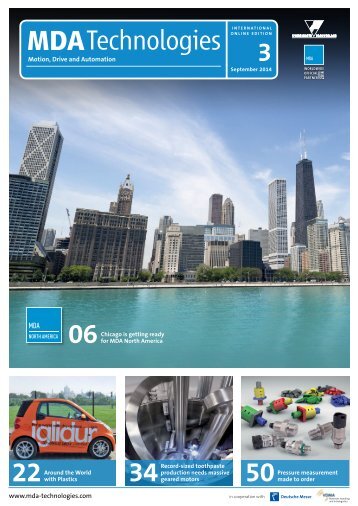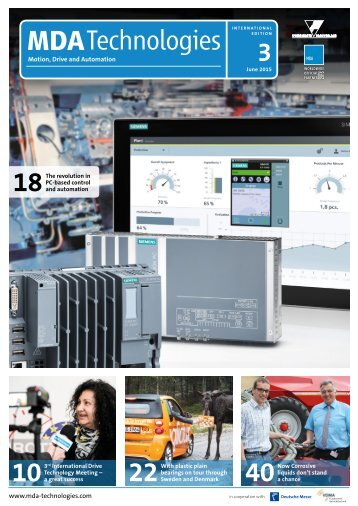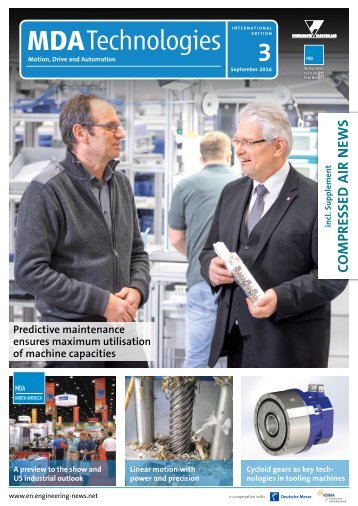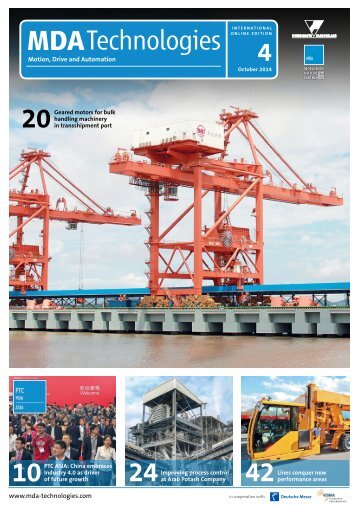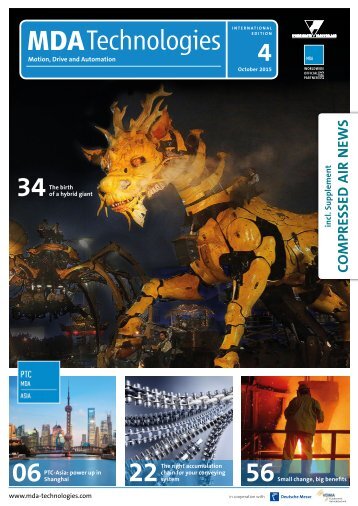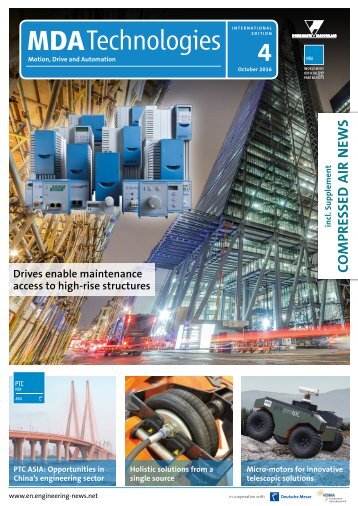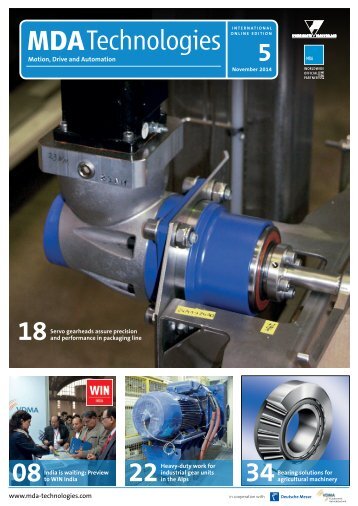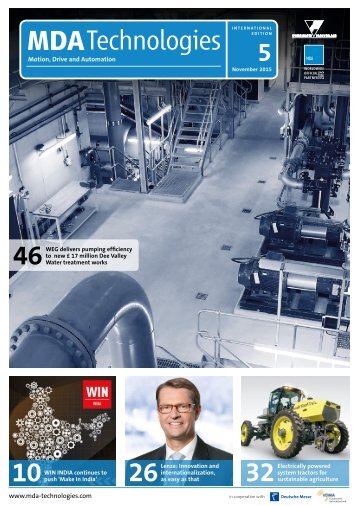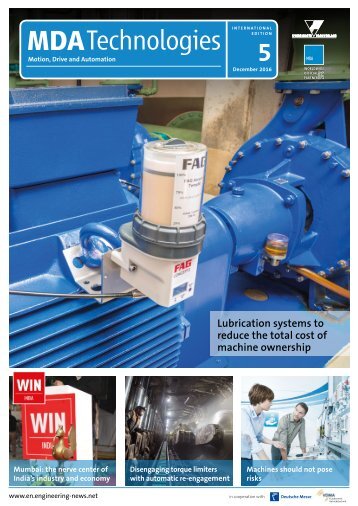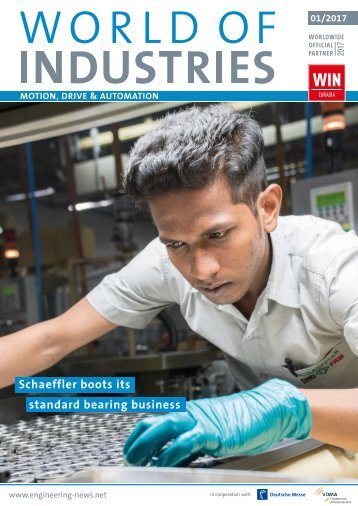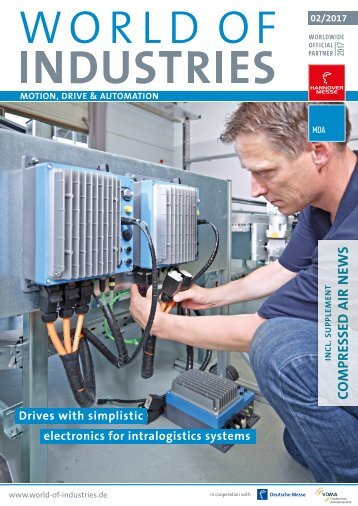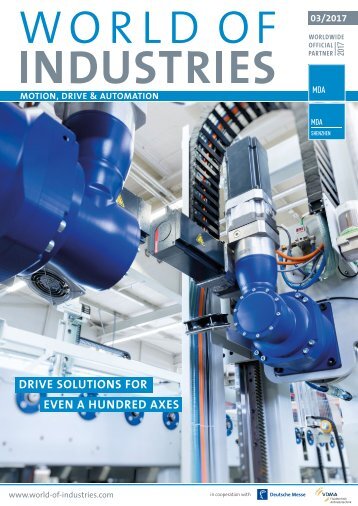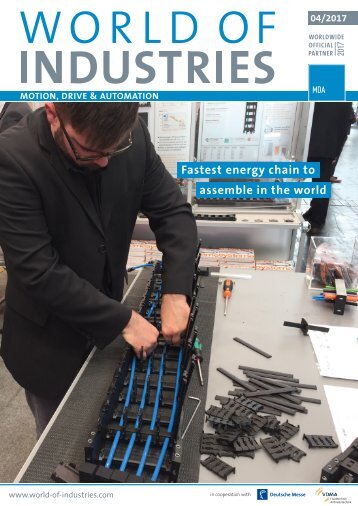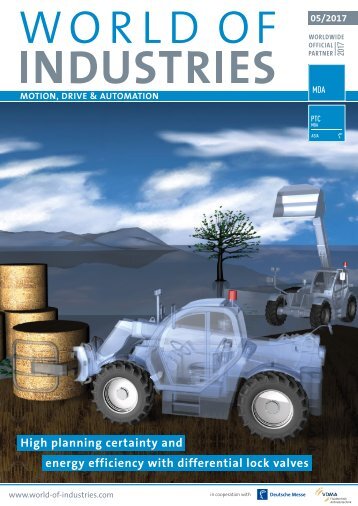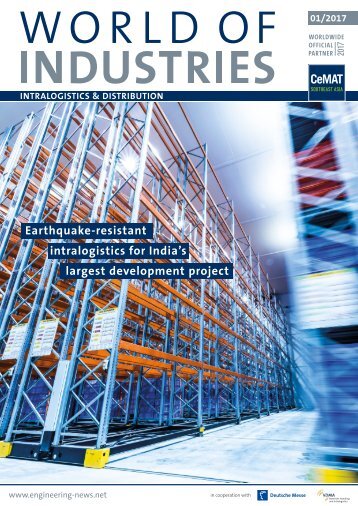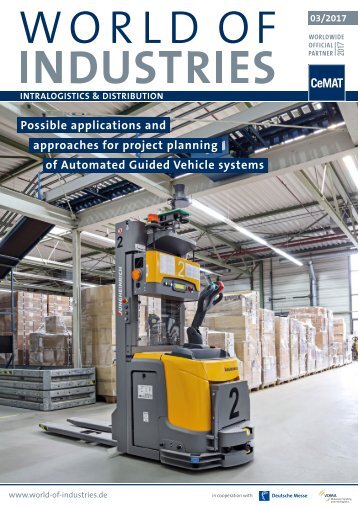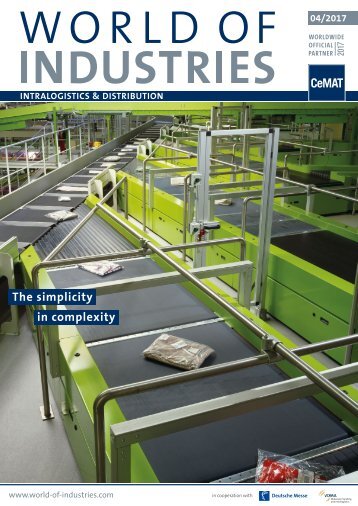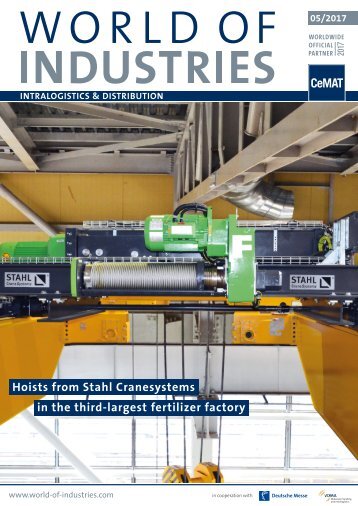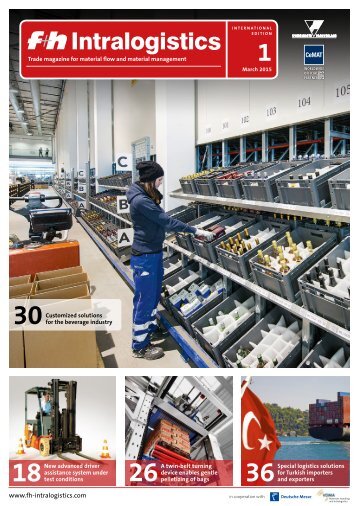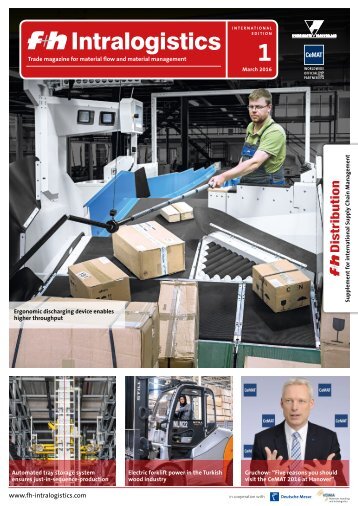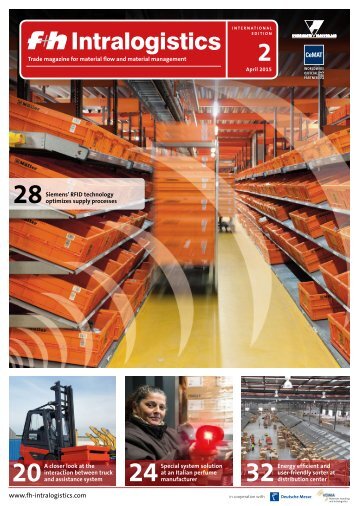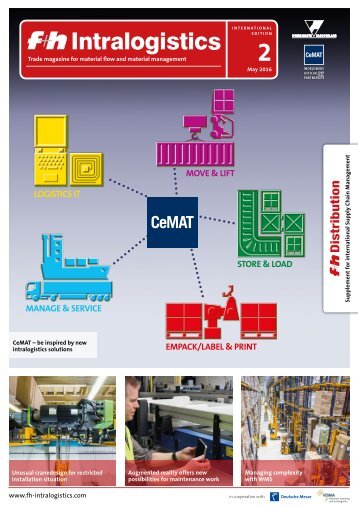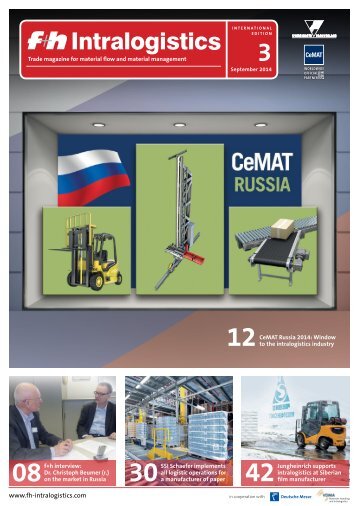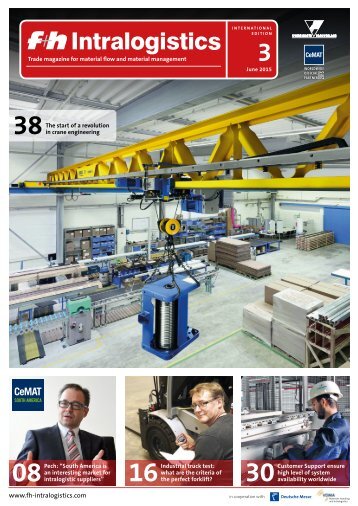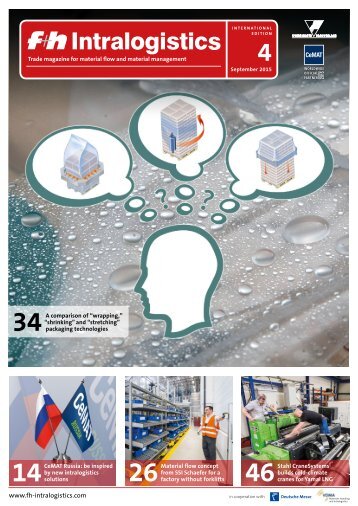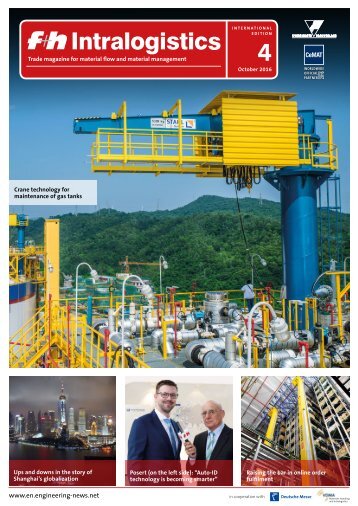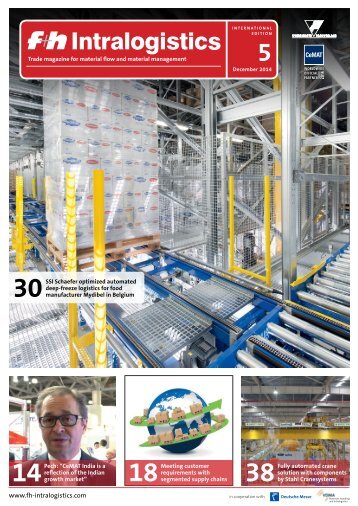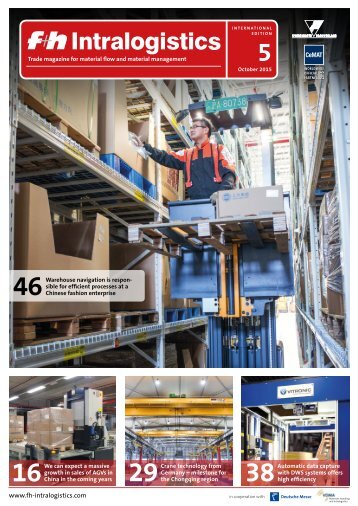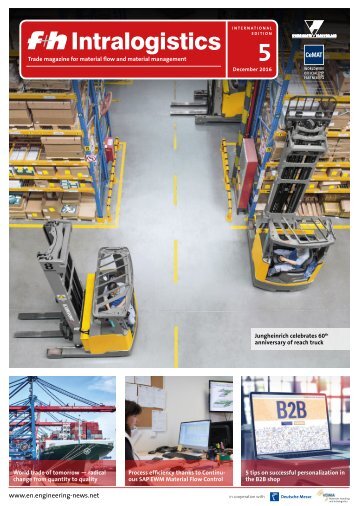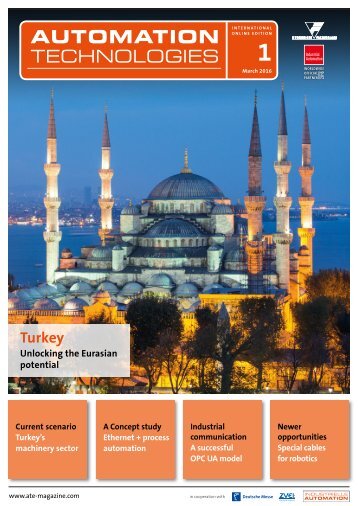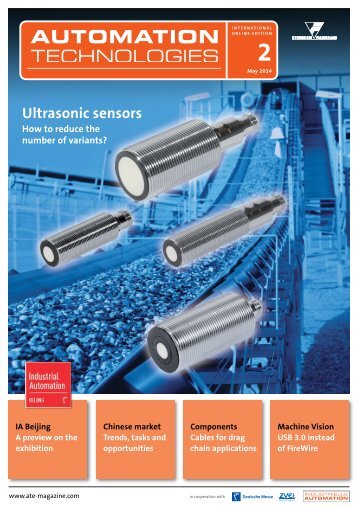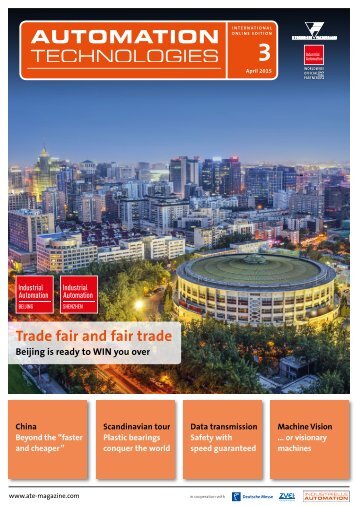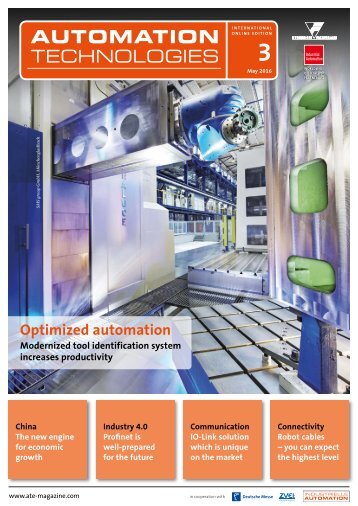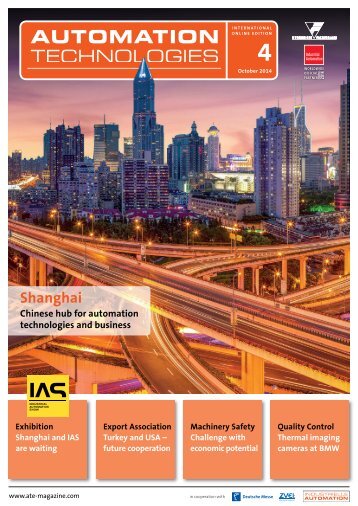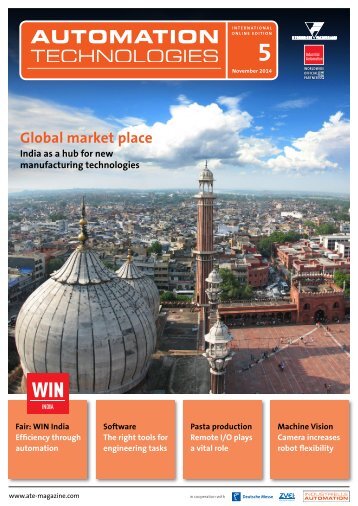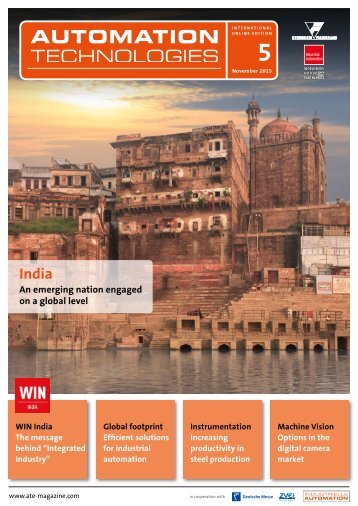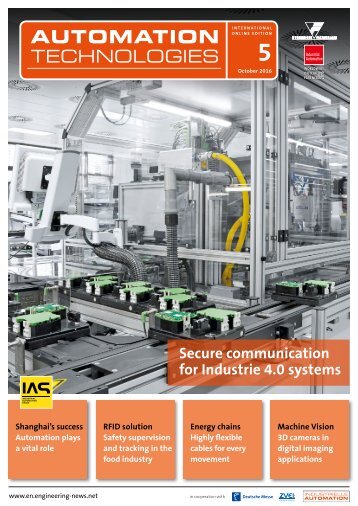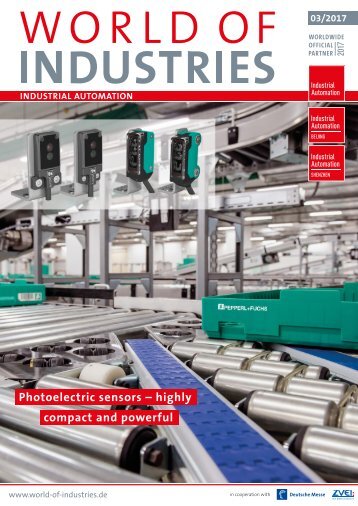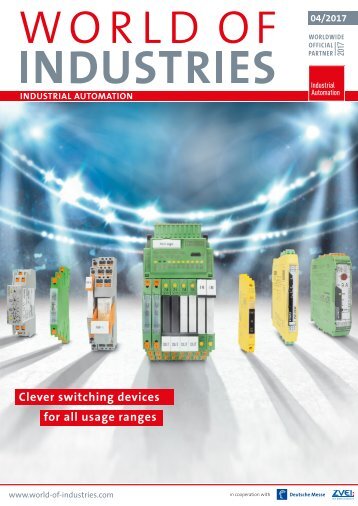Automation Technologies 1/2016
- Text
- Automation
- Technologies
Thermal monitoring of
Thermal monitoring of casting process About Optris Ever growing increases in production efficiency also puts an additional strain on continuous casting equipment and therefore call for comprehensive process monitoring features. Especially in the field of temperature sensing this phenomenon has driven many developments: the technology has become less expensive while offering greater accuracy, so that its widespread use has become worthwhile and affordable. Specialist companies such as Optris have rolled out many product innovations in recent years. For plant operators this technology is worth the investment, as it allows them to prevent costly cast aborts before they happen, while at the same time improving the quality of their products. For more than 10 years, Optris GmbH has been developing and manufacturing innovative infrared measurement devices for non-contact temperature measurement, including hand-held thermometers, stationary industrial thermometers, and infrared cameras for point and area measurement. The company has a comprehensive product portfolio comprising of infrared measurement devices for different industrial applications as well as research & development. Along with the thermal analysis software, its measurement devices enable constant monitoring and control of various manufacturing process, and offer a reduction in production costs through specific process optimization. Quality assurance through temperature monitoring In today’s world of industry, steel has become a high-tech material that is being alloyed with many additional metals and non-metals, beside iron and carbon. At identical quantity ratios, the resulting compositions depend on the time-temperature profile. Due to this fact, the need for temperature measurement is becoming ever more critical in steel production in order to obtain and monitor the desired quality. In terms of quality, the focus lies especially on properties such as strength and corrosion resistance. MACHINE VISION According to the German Ministry for Economic Affairs and Energy ‘BMWi’, the German steel industry alone is currently generating annual sales of about € 50 billion. Some 100,000 workers produce over 100 million tonnes of crude steel, pig iron and hotrolled steel products. The industry is booming, not least because steel producers have continuously been improving the efficiency of their plants. The downside of all this is that it also takes its toll on all equipment involved. There is a growing risk of strand defects, local leaks or even run-outs of molten metal, resulting in extremely costly cast aborts. This is why comprehensive process monitoring is becoming more and more important. Also, customers do of course expect to get high-quality steel. All this is reason enough to look at some of the possibilities and product developments in the field of contactless temperature measurement. The complexities of continuous casters Today, about 90 % of all steel is produced by continuous casting. From the ladle placed in the ladle turret, molten metal flows through a bottom slide gate into the tundish and from there to the mould. To prevent oxidation and cooling, the liquid steel in the ladle and tundish is covered with casting powder, which causes slag formation on the surface. In the curved section underneath the mould, the strand is cooled by air and water in the spray chamber. As the strand leaves the mould it already has a solidified shell, though its core is still liquid. Only when it exits the spray chamber has the steel turned into a mostly solidified slab which will later serve to produce things such as steel sheet material and automotive body parts. So, a complete continuous caster is a very complex structure whose individual processes interact very tightly. If a problem occurs at one point, it will likely affect the system as a whole. AUTOMATION TECHNOLOGIES 1/2016
Preventing cast aborts One of the most important protective measures is thermal monitoring. This monitoring must be very precise if it is to provide early warning of the hazards of a cast abort and allow operators to take corrective action. The objective is to keep the casting speed as constant as possible, because a reduction in casting speed will already lead to production losses. The challenge is that the requirements to be met by the monitoring system are very different in the various locations where problems may potentially occur. Thermal imagers, for example, are highly suitable for measuring the amount of slag or for hot-spot detection, but in the difficult climatic conditions prevailing in the curved section of the caster, stainless-steel infrared thermometers offer many advantages. Specialist provider of contactless temperature sensing technology At the Berlin based Optris GmbH, people are very familiar with the various challenges involved in thermal monitoring of continuous casters. Its engineers and experts for infrared temperature measurement applications can draw on an extensive product portfolio ranging all the way from handheld pyrometers to fixed industrial pyrometers and infrared cameras. In close cooperation with various partners they have developed solutions for the various processes to be monitored in continuous casting applications. This is illustrated by two examples below. Controlling the casting powder distribution For good quality products, temperature uniformity of the molten steel contained in the ladle is of the essence. This used to be obtained by applying flux powder by hand over a large area. Today this is done in an automated and efficient manner, where the metal bath in the ladle and tundish is continuously monitored for hot spots by infrared cameras, so that powder needs to be sprinkled on the hot spots only. The granulated flux is taken to the required spots by means of a compact mobile metering unit and evenly distributed on the melt. In addition to improving the safety of steel workers, this technique also contributes to a better strand quality. However, it can work properly only if it is based on precise measuring data. The S&B Industrial Minerals group, which offers its Flux Feeder both as a stand-alone solution and as an electronically controlled unit, relies on infrared cameras made by Optris. Overcoming the adverse conditions The ratio pyrometer ‘CTratio’ was developed specifically for the challenging climatic conditions prevailing in the spray chamber. The salient feature of this sensor is its sandwich-type detector that measures radiation energy at two different wavelengths. This type of pyrometer is also known as two-colour pyrometer. ‘CTratio’ cal culates the temperature of the measured object from the ratio of the two energy levels. This makes the high-performance infrared thermometer largely insensitive to fumes, dust and soiled sight glasses, making it a good choice for monitoring strand temp eratures Infrared camera optris PI 450 IR thermometer optris CTratio Spray chamber Liquid steel Casting powder/ slag Solidified steel Fire resistant material, rolls 01 Schematic illustration of continuous casting process in the curved caster section. Even with sight glasses soiled to more than 95 %, it will deliver accurate data in the temperature range between 700 and 1 800 °C. What’s more, with its glass-fibre cable and separate electronics box it can be deployed in areas with temperatures going up to 250 °C without the need for extra cooling. The infrared thermometers measure the temperature of the strand at several locations in the spray chambers and after it leaves the chamber. If the strand temperature is not optimal, this monitoring allows the metal temperature in the ladle or the process speed to be adjusted in real time. Conclusion The higher the production efficiency of continuous casters, the more severe the strain put on their individual system components. At the same time, production losses become ever more significant if problems or even cast aborts occur. This makes it more and more worthwhile for plant operators to invest in monitoring methods. Especially in the field of thermal monitoring, which has driven the specialist in this sector, to raise the quality of temperature measurements – all the way from the ladle turret to the slab – to a higher level through a series of innovations and developments. Photographs: Fotolia teaser, Optris GmbH www.optris.com 02 New shortwavelength infrared camera for high temperature applications 03 The ratio pyrometer optris ‘CTratio’ 1M for high-temperature measurements AUTOMATION TECHNOLOGIES 1/2016
- Page 1: INTERNATIONAL ONLINE EDITION 1 Marc
- Page 4 and 5: COLOMBIA SLOVAKIA Looking at the br
- Page 6 and 7: News and Markets New catalogue for
- Page 8 and 9: Looking at the bright side of Turke
- Page 10 and 11: small and medium-sized companies an
- Page 12 and 13: Radiometric density measurement on
- Page 14 and 15: Industry 4.0 and IO-Link, spicing u
- Page 16 and 17: Monitoring compressed air consumpti
- Page 18 and 19: Fountain of youth for “old iron
- Page 20 and 21: INDUSTRIAL COMMUNICATION Unifying e
- Page 22 and 23: INDUSTRIAL COMMUNICATION How did yo
- Page 24 and 25: Opportunities for cable manufacture
- Page 26 and 27: Reliably pluggable in the field ‘
- Page 30 and 31: Improved track monitoring efficienc
- Page 32 and 33: Revealing the thermal charecteristi
- Page 34 and 35: Jumo expands its power controller s
Inappropriate
Loading...
Mail this publication
Loading...
Embed
Loading...

